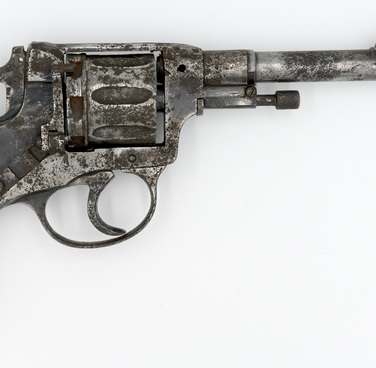The Polyarny Museum of History of Local Lore presents a travois — a device for transporting goods, consisting of two poles that are dragged along the ground by an animal or a person. The travois (or “volokusha”) was very common in the northern and northeastern provinces of the Russian Empire and was used to transport goods mainly from places where wheeled vehicles could not pass.
During the Great Patriotic War, nurses and orderlies transported wounded Red Army soldiers from the battlefield to first-aid posts. To do this they often used cloak-tents but there was also a more convenient device at their disposal — a travois. Everything could be used as a travois: tree branches, boards, poles, pieces of metal.
A travois consists of arc-shaped runners sheathed with some kind of material and interconnected with metal strips. The wooden runners have an upward curve in the back. At the front, the ends of the runners’ arches are connected with two boards. Foldable metal strips are attached between the runners in the front, middle and back. Two folding handles are attached to the back of the runners. The runners in the front part and the boards connecting the ends of the arc of the runners are upholstered with canvas fabric sheathed with a coarse cloth with a yellow-burgundy pattern. The fabric is attached to the runners and boards using wooden slats. In the front part of the travois, both runners have a pair of bushings made of metal strips. 90 cm-long wooden poles which act as the handles for carrying the travois are threaded into these bushings.
Such travois were used in the
Arctic (especially in harsh winter conditions) to carry the wounded from the
battlefield. To do this, the wounded person was laid on the travois with their
feet to the arched part of the runners, the poles were pushed out in front of
the travois. This travois was foldable, which made it easier to carry it to the first-aid posts. The
travois was used by the hospital staff of Polyarny.



